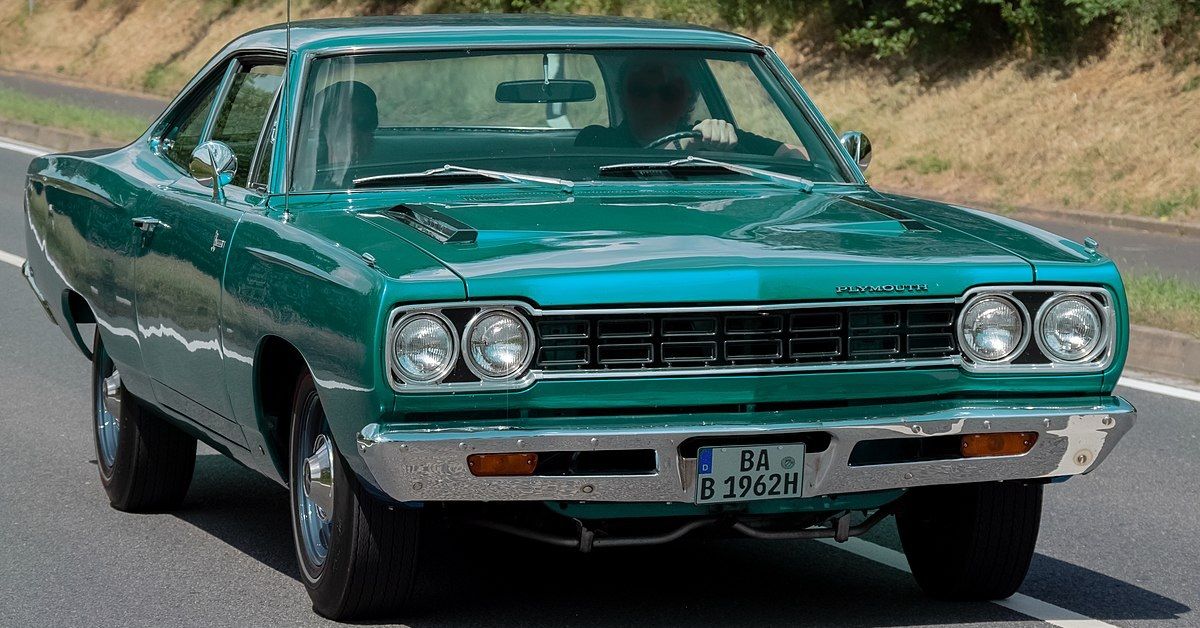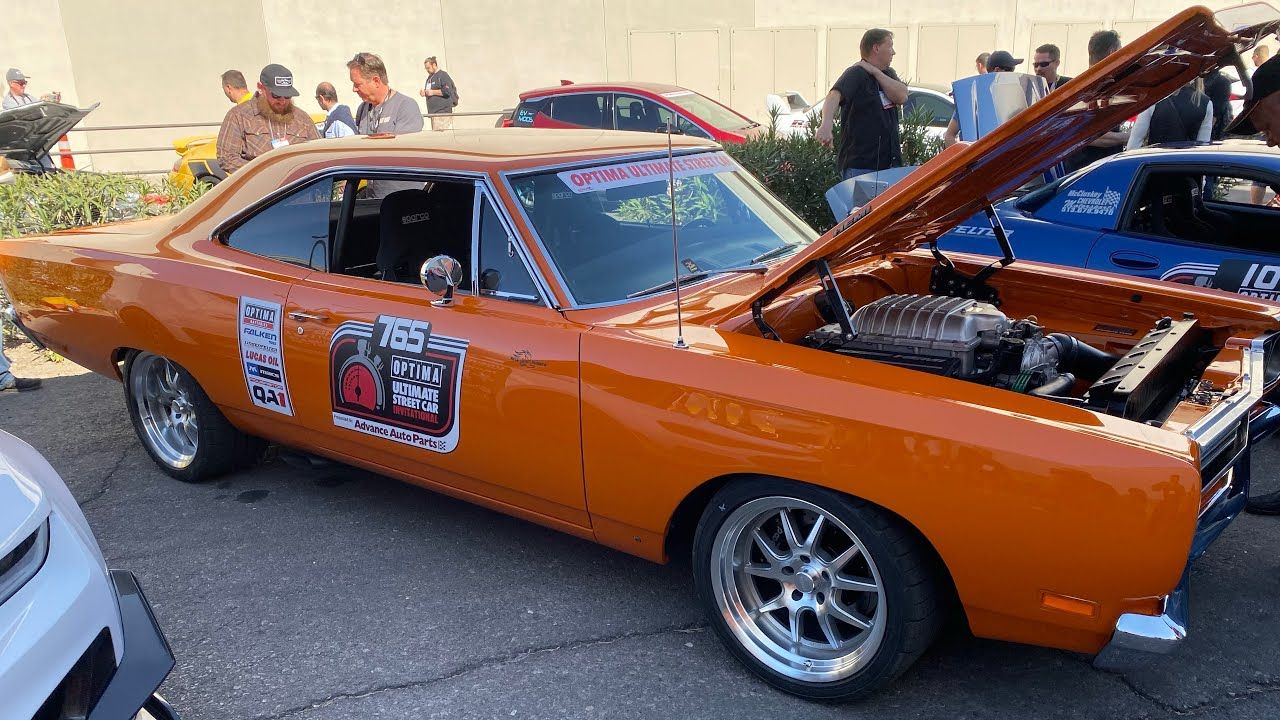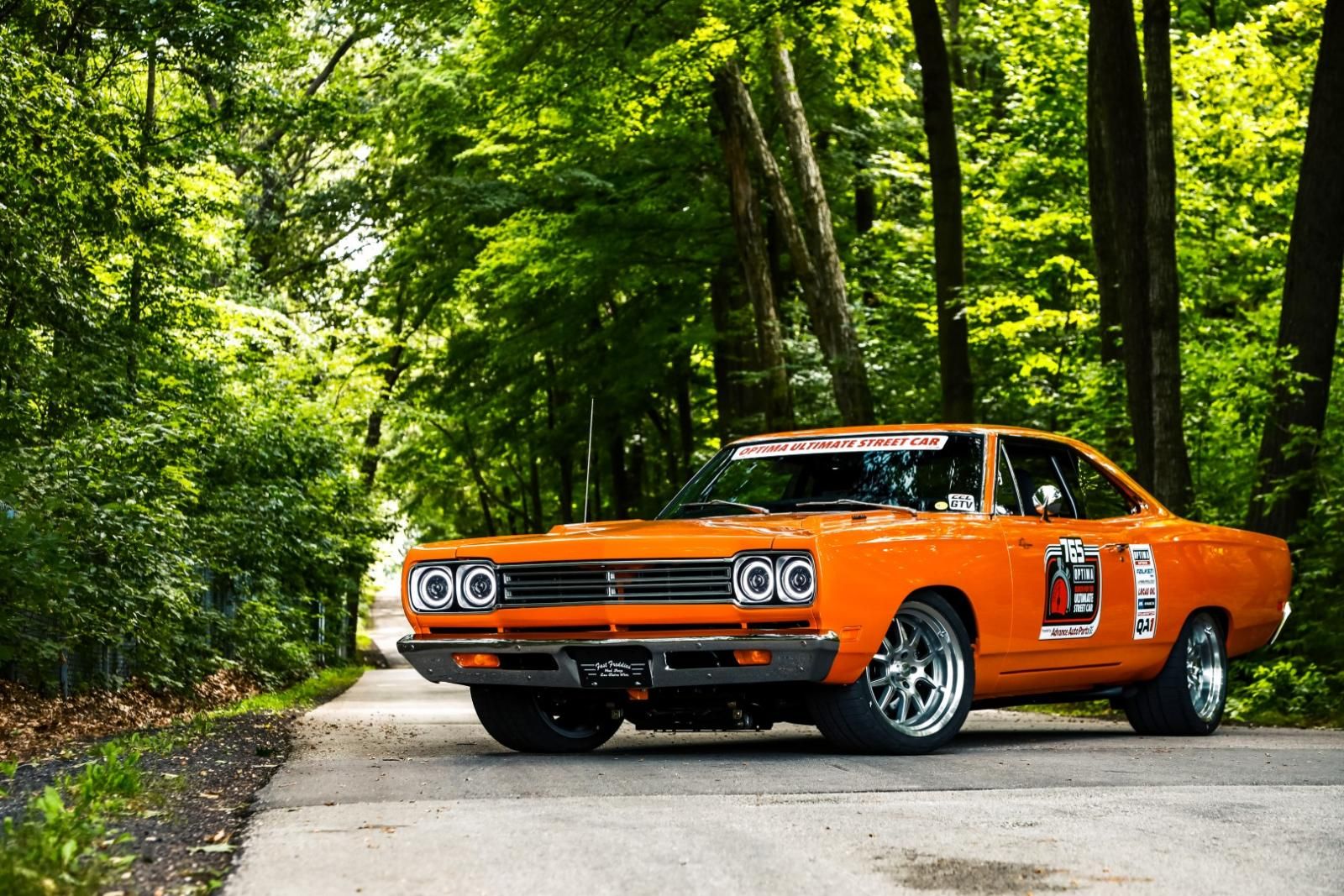The Plymouth Roadrunner made its debut in 1967 before entering production the following year. The muscle car had a 12-year run before being discontinued in 1980. Like many American cars, the Plymouth Roadrunner was assembled in the automotive home base of Detroit, Michigan.
This mid-size car was built with one thing in mind, performance. It was part of the muscle car transition from cheap, quality, loud cars to sophisticated machines that could perform.
Interestingly, when the Plymouth Roadrunner debuted, Chrysler had to pay $50,000 to Warner Brothers in order for them to use the RoadRunner name. This was because Warner Brothers owned the name based on their cartoon, Wile E. Coyote and the Road Runner.
We'll focus on the '69 Roadrunner's best feature before taking a look back on the history of the Roadrunner from the late '60s to the early '80s.
The 1969 Plymouth Roadrunner Had An Awesome Powertrain
There are many features to love when it comes to the 1969 Plymouth Roadrunner, but the engine takes the cake. This ride came with three engine options that included a 6.3-liter, 7.2-liter that was dubbed the 440 six-pack, and a 7.0-liter Hemi. Each of these engine options had a 4v, 6v, and 8v carburetor, respectively.
The maximum power output capacity of these engines was 335 hp at 5,200 rpm and 425 lb-ft at 3,400 rpm, 390 hp at 4,700 rpm and 490 lb-ft at 3,200 rpm, and finally, for the 8v option, 425 hp at 5,000 rpm and 490 lb-ft at 4.000 rpm.
Other key numbers on the 1969 Plymouth Roadrunner engine options include a compression ratio of 10.1:1, 10.1:1, and 10.25:1. Also, a Bore and Stroke combination of 4.250 x 3.380, 4.320 x 3.750, and 4.250 x 3.750.
History Of The Plymouth Roadrunner
The first generation Plymouth Roadrunner was in production from 1968 to 1970; this generation was a four-car lineup that included the 1968, 1969, and 1970 models as well as the Plymouth Duster I Plymouth Roadrunners.
The second generation was picked up in 1971 and continued until 1974 before production was halted. This generation also saw four models manufactured too, one for each year of the second-gen Roadrunner.
The third-generation Plymouth Roadrunner production ran for five years from 1975 to 1980 before marking the end of the Plymouth Roadrunner. For this generation, only two distinct models were created. These were the 1975 Plymouth Roadrunner and the 1976 to 1980 Plymouth Roadrunner that came with an F-body trim.
Compared to other first-generation Plymouth Roadrunners, the 1969 Plymouth Roadrunner looks pretty much the same from the outside. The only key exterior differences you may notice are its grille and taillights.
In 1969, the Plymouth Roadrunner came with a convertible option, brand new decal, side marker lights, and optional bucket seats. For the 1969 Plymouth Roadrunner, the company manufactured 2,128 units, each with a standard 6.3-liter engine. Out of the 2,128 units, ten were fitted with 7.0-liters Hemi engines.



